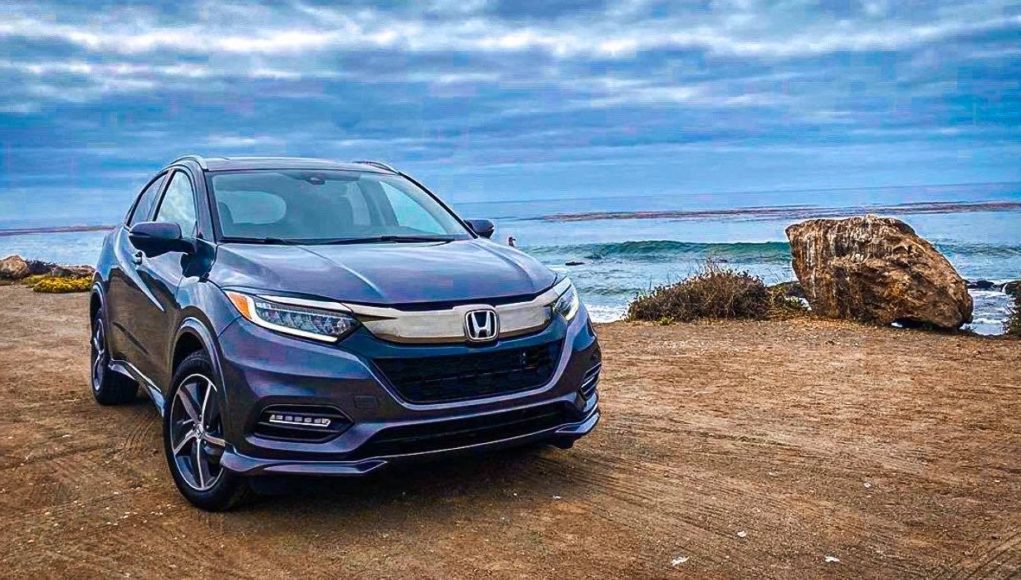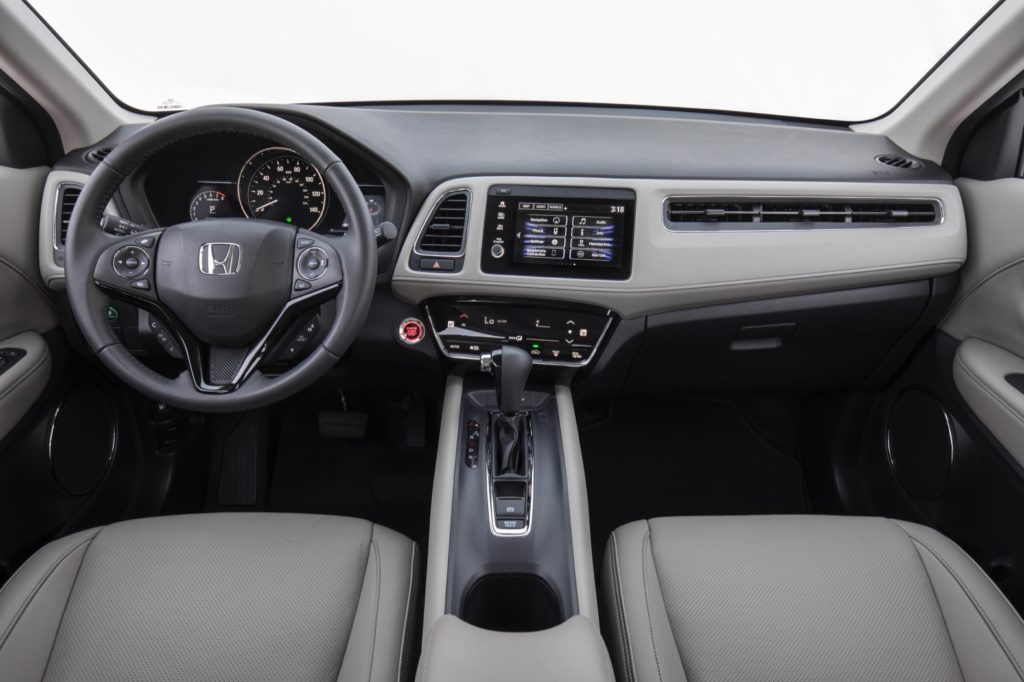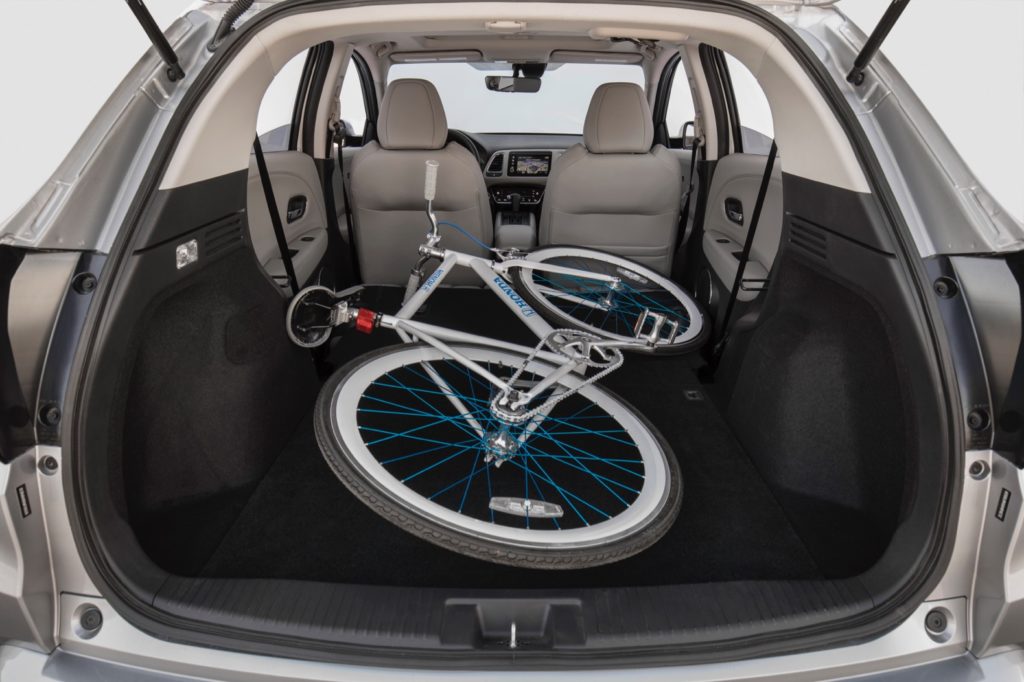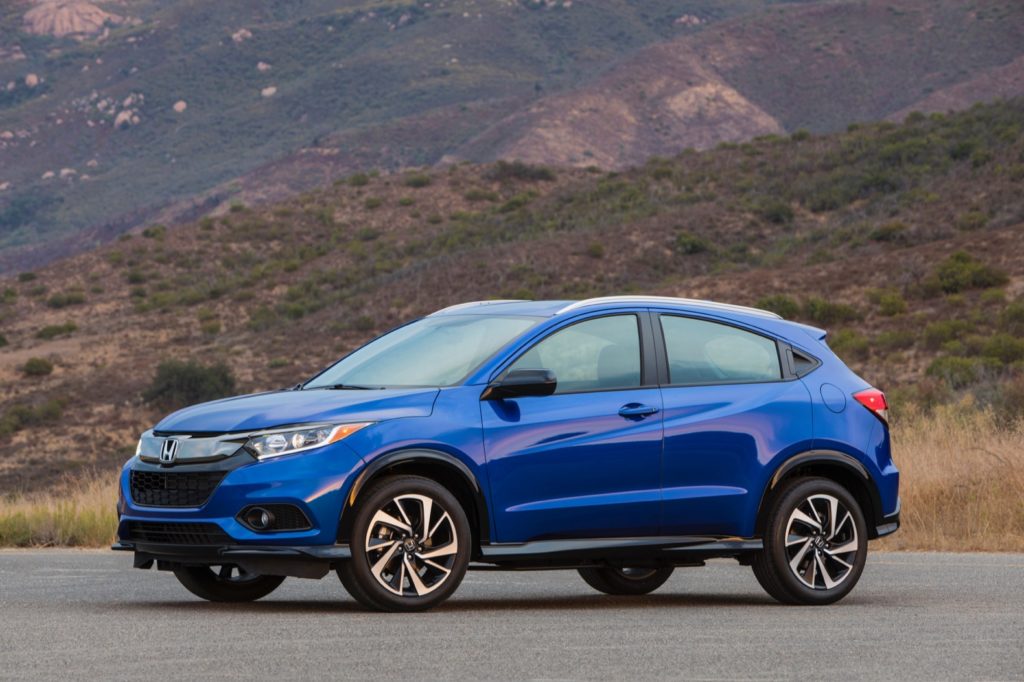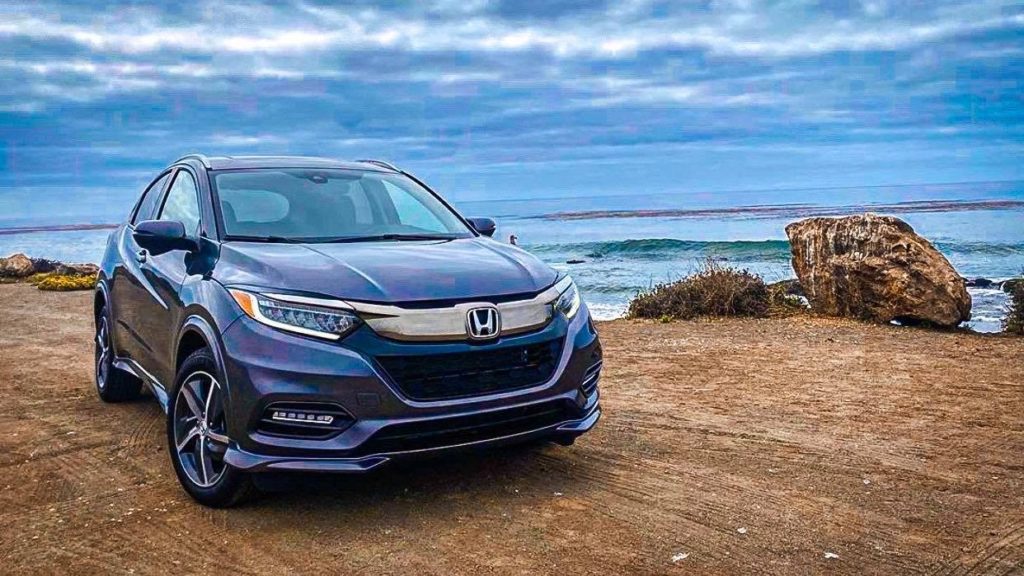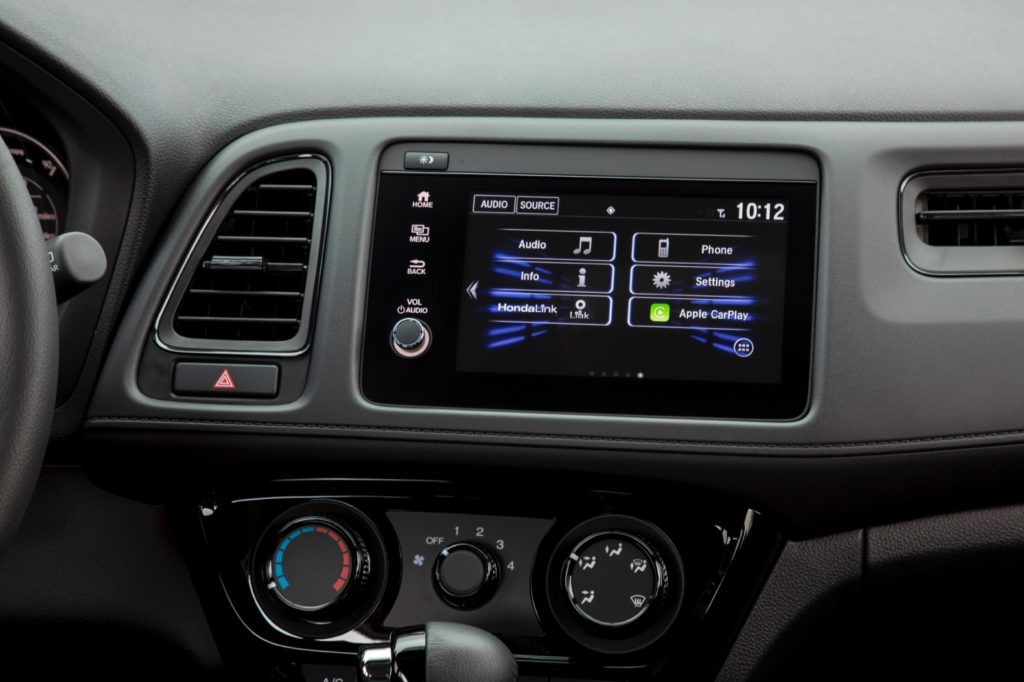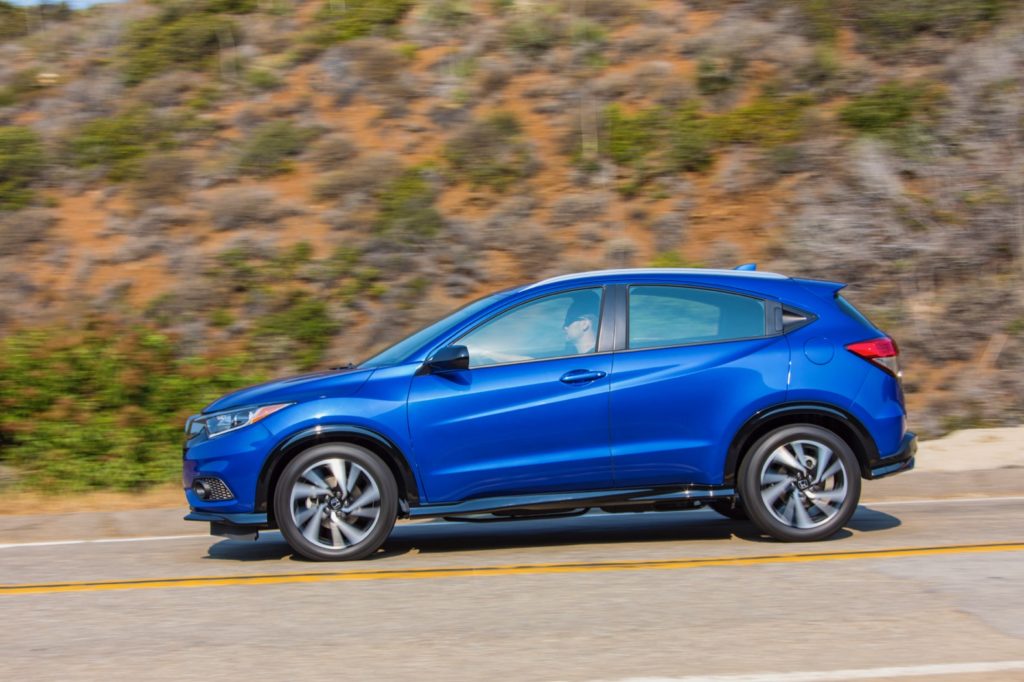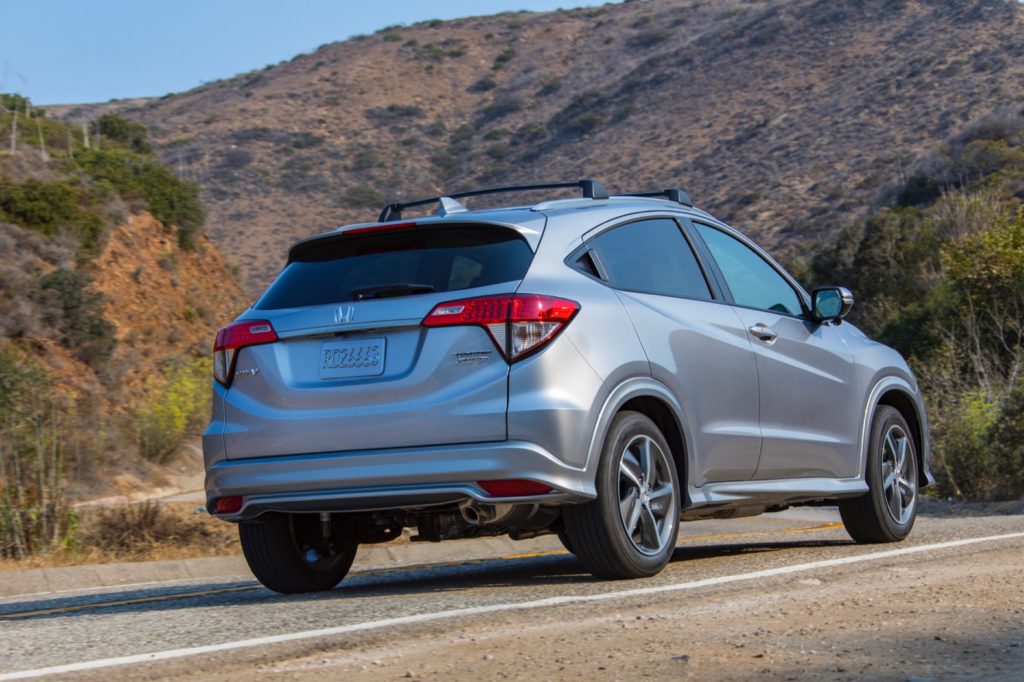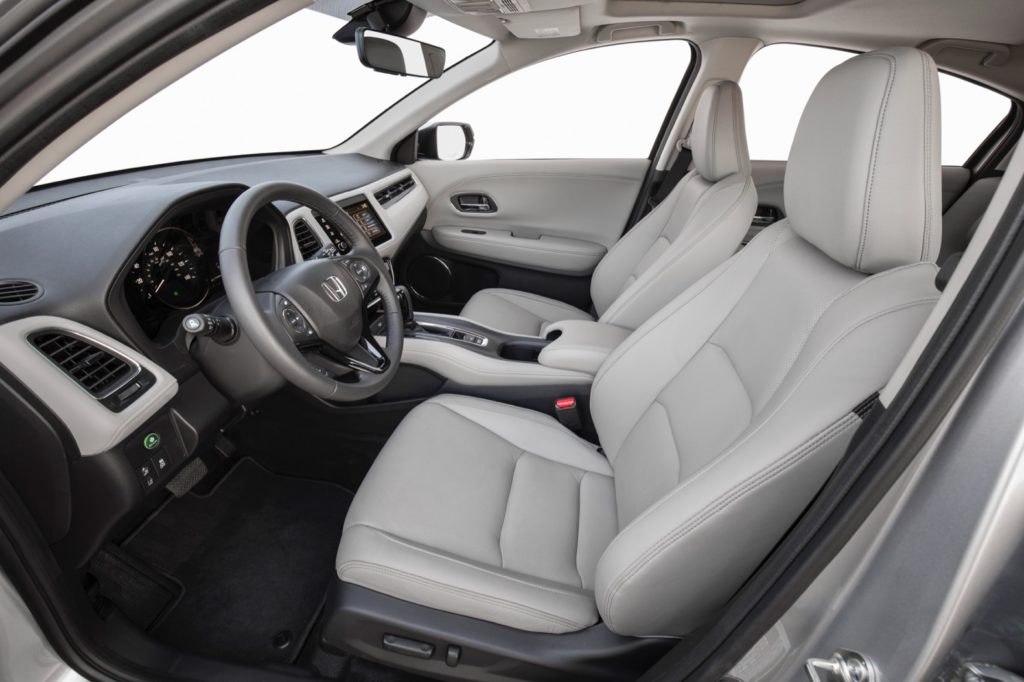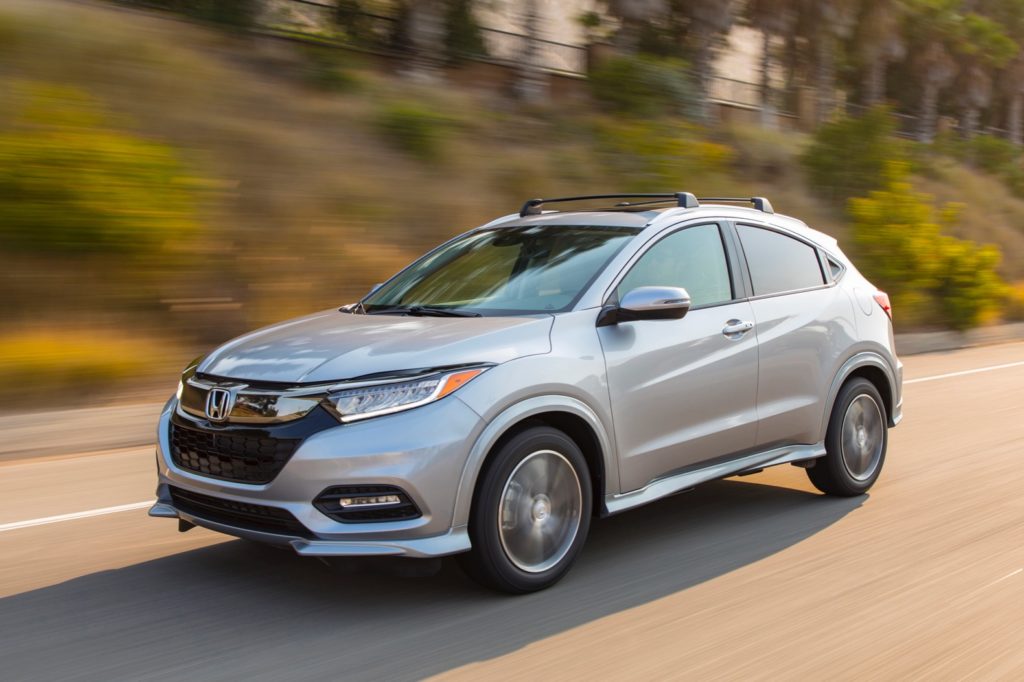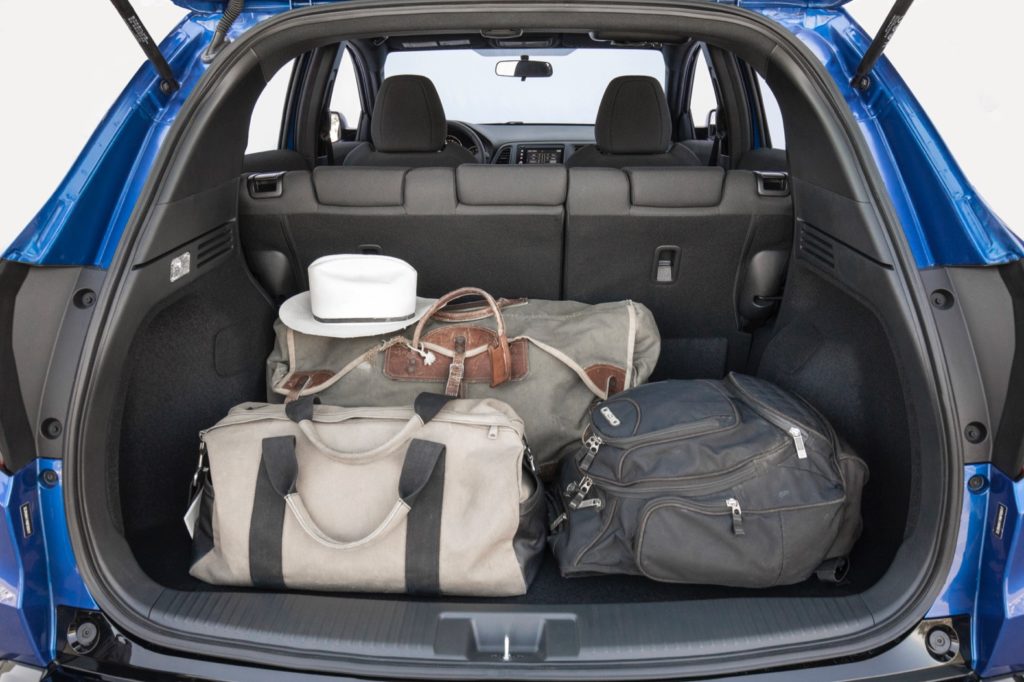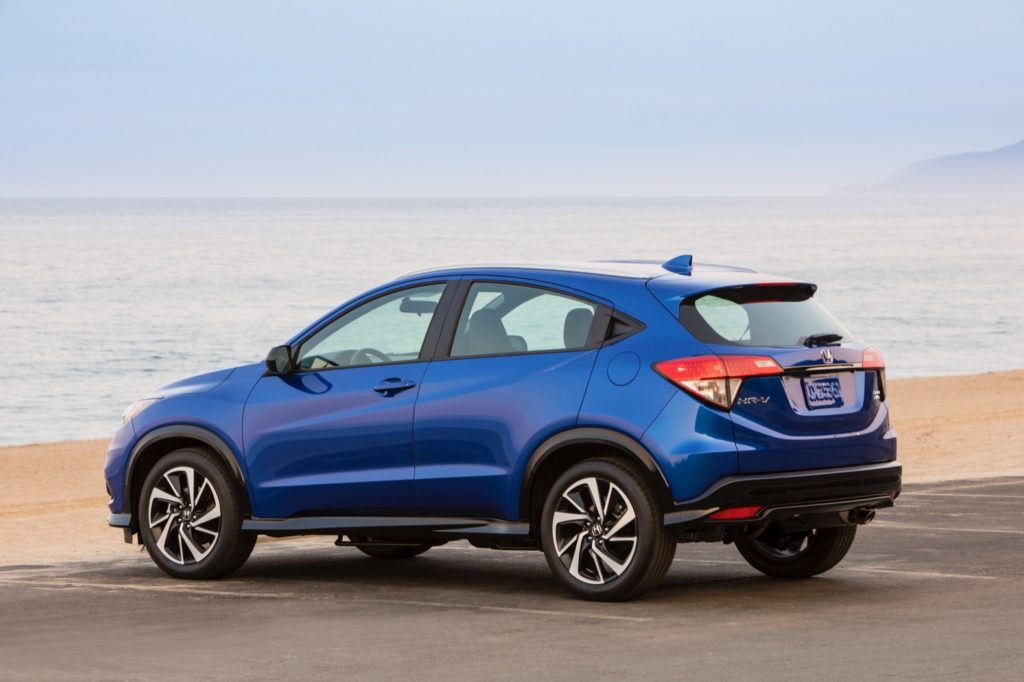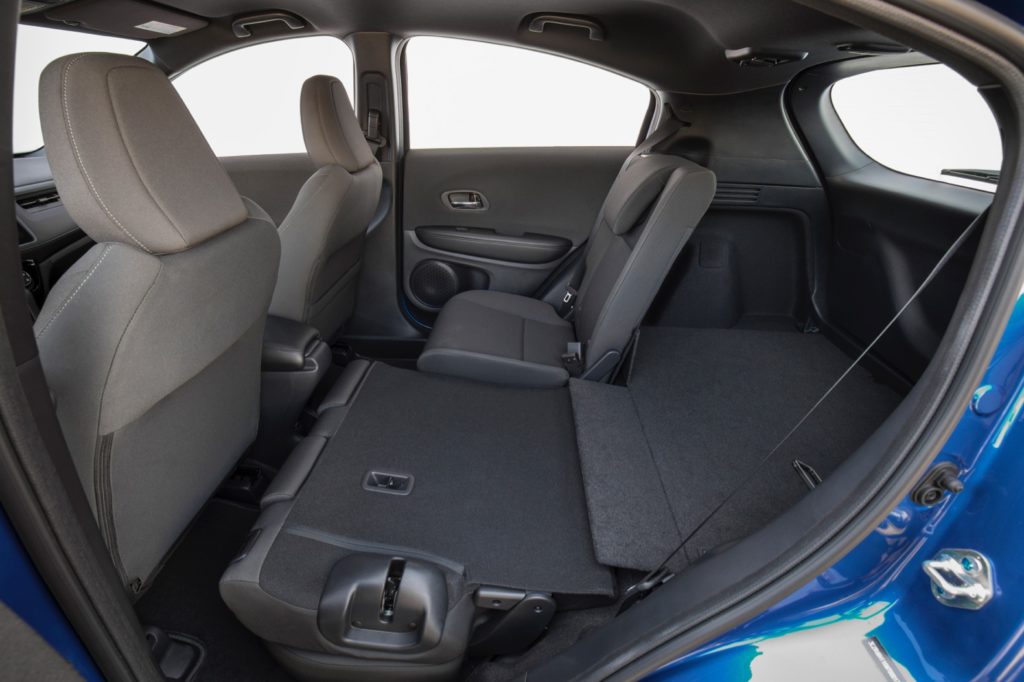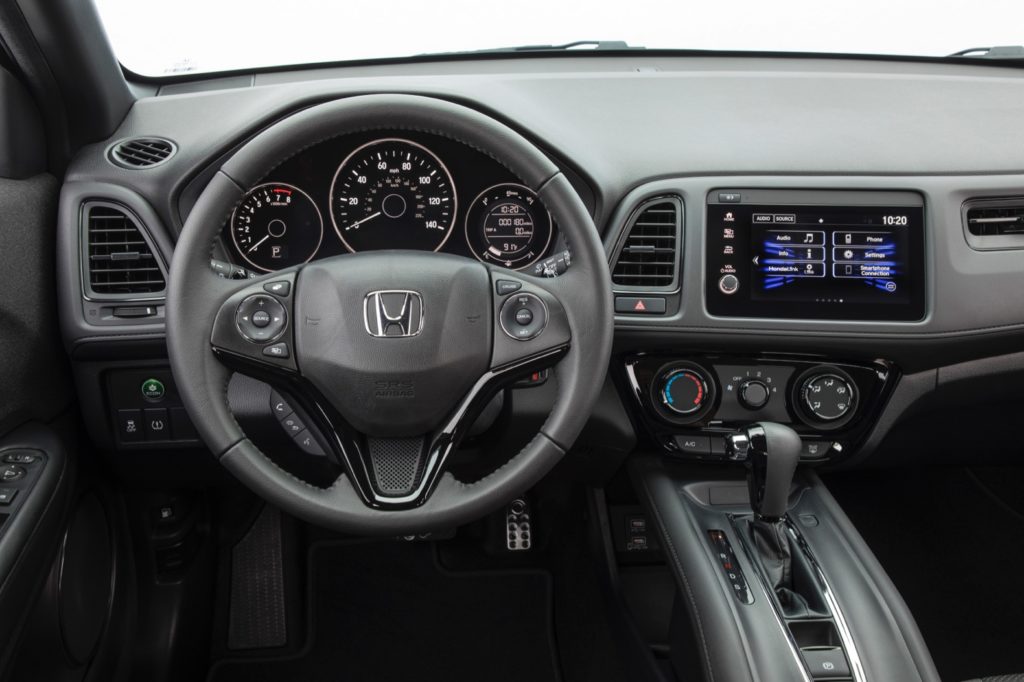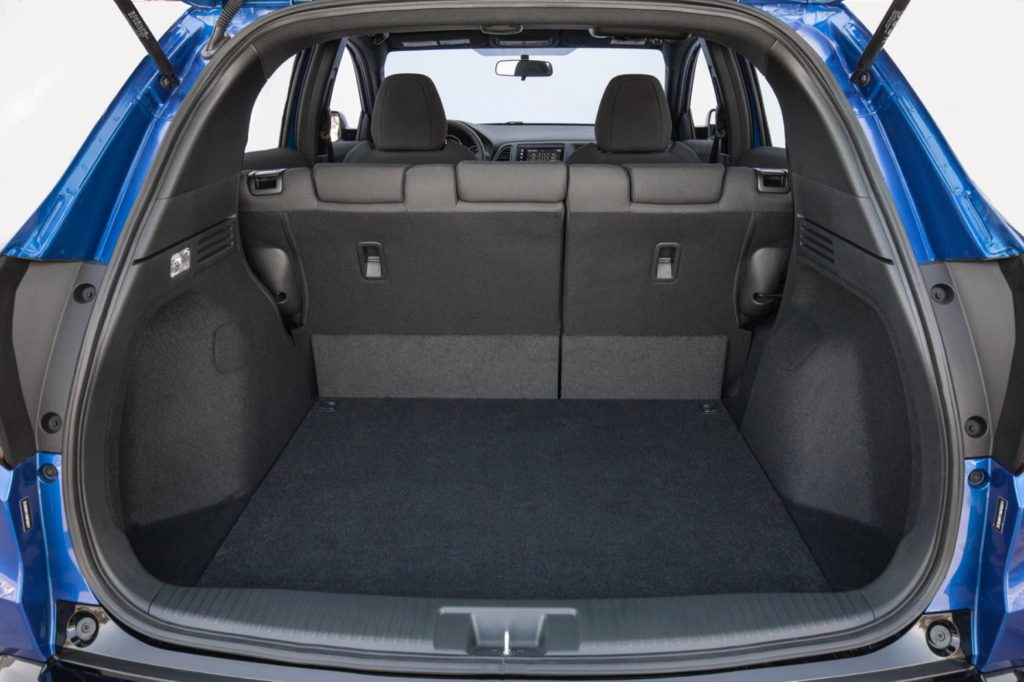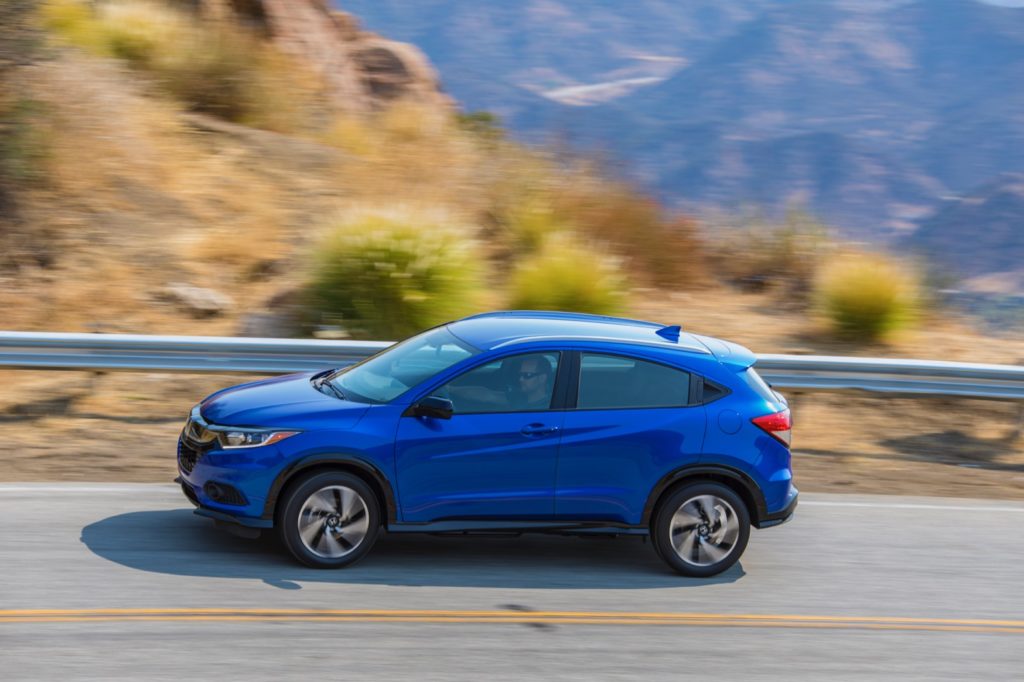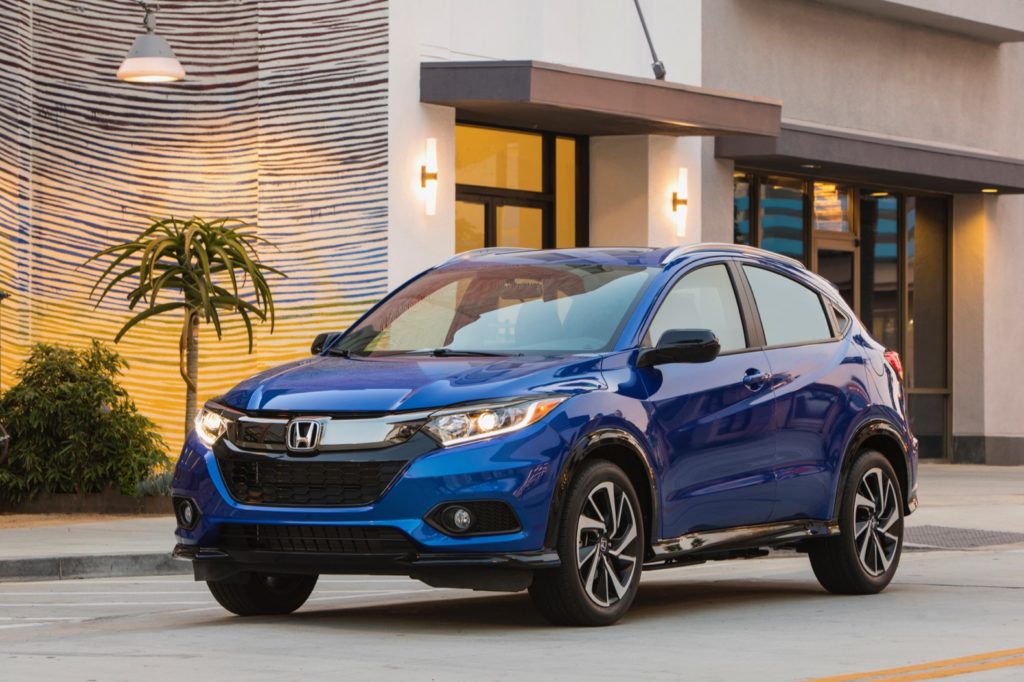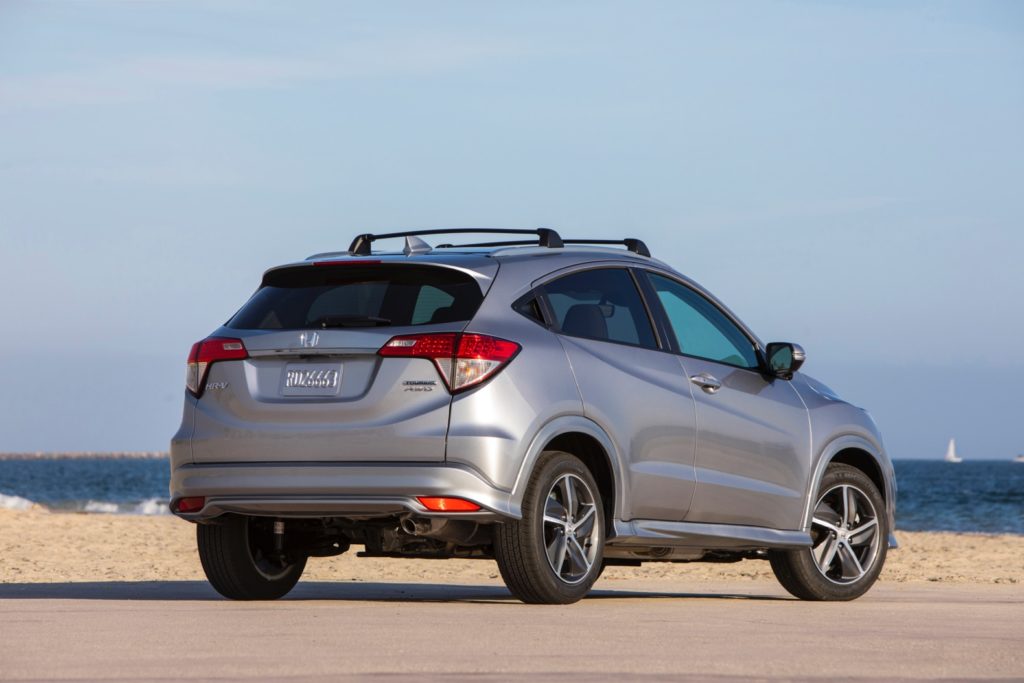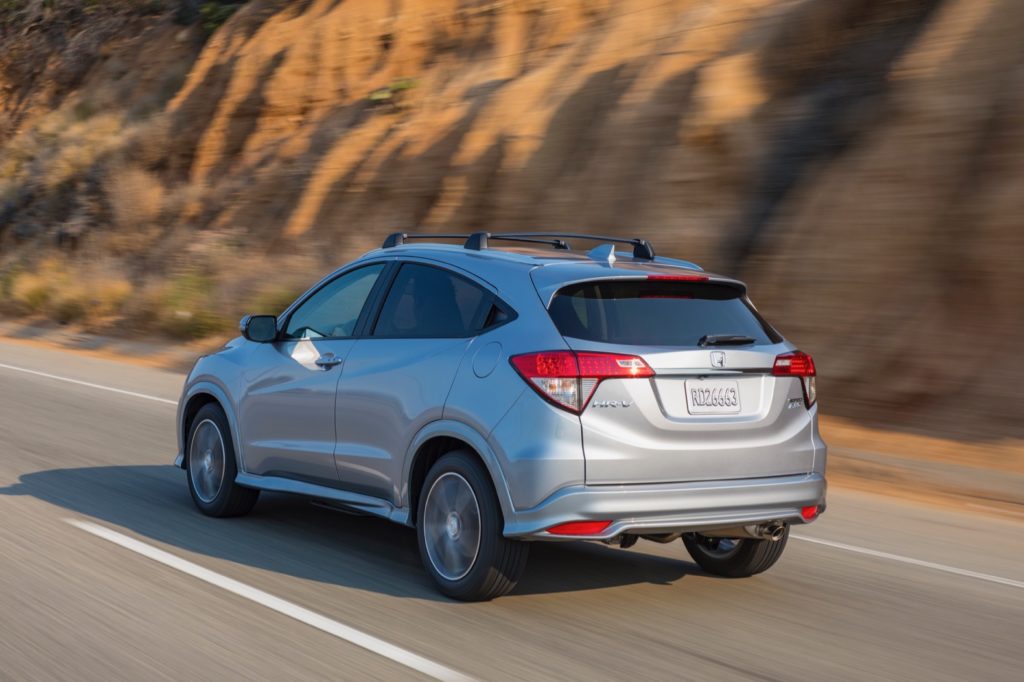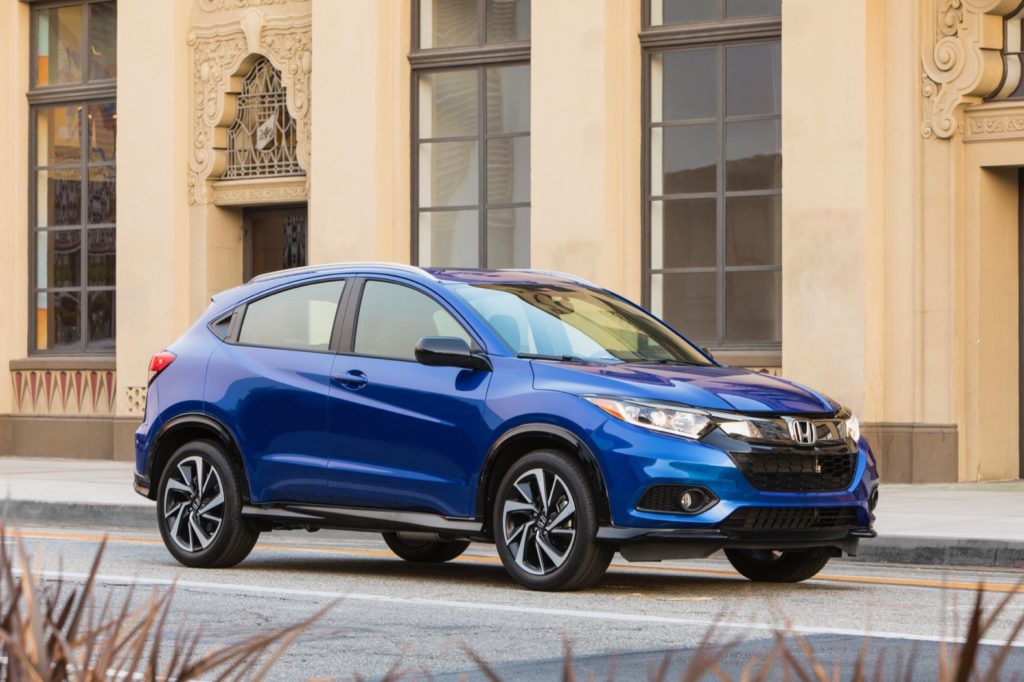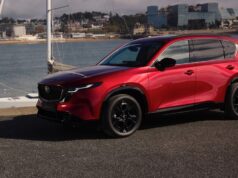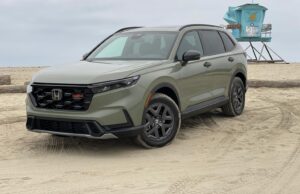The subcompact crossover segment is packed with several options, like the Hyundai Kona, Nissan Kicks and Ford EcoSport, but if you want one that doesn’t feel small inside and that can haul all your gear, you’ll want to check out the Honda HR-V. It’s no surprise that the HR-V is a magician when it comes to finding space for your gear, since it shares its platform with the Fit.
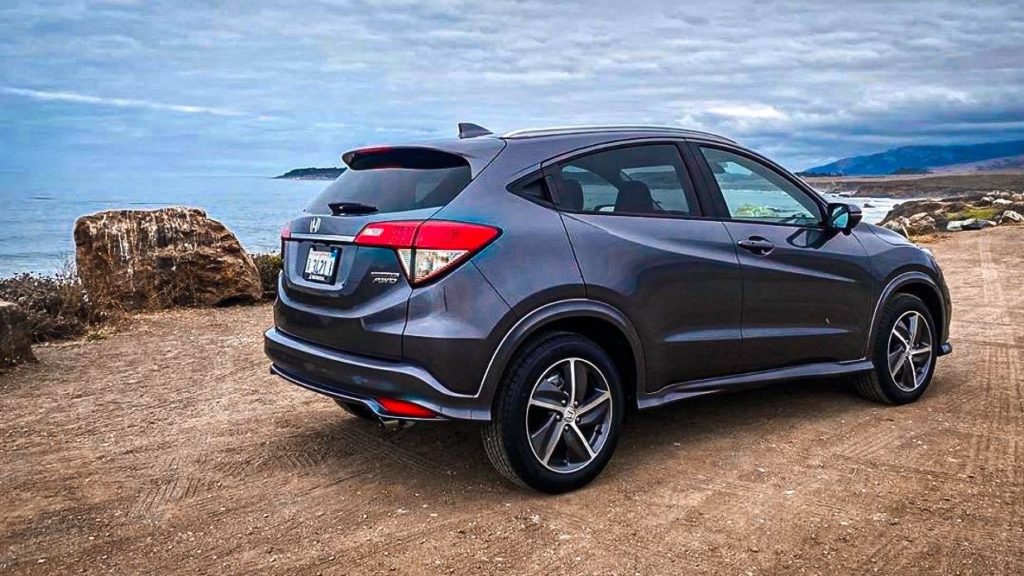
For the 2019 model year, the HR-V has received a small facelift, which includes a new grille, headlights and wheel designs. The 2019 HR-V also introduces the new Sport and Touring trim levels. Honda also updated the CVT transmission and steering. Inside there are also a few tweaks, like the updated infotainment system with Apple CarPlay and Android Auto. To keep everyone safe, the 2019 HR-V is also available with the Honda Sensing suite of driver assistance technologies, like adaptive cruise control, emergency braking and lane keeping assist. Speaking of safety, the 2019 HR-V earned the Top Safety Pick rating from the IIHS.
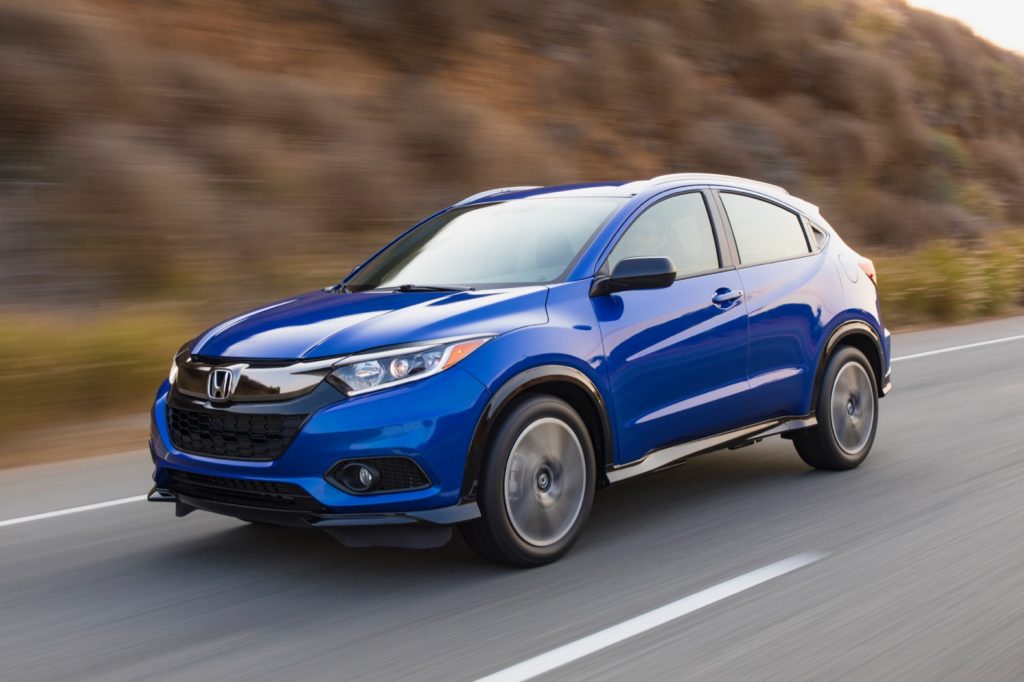
Although the HR-V shares its platform with the Honda Fit, it does get a different engine, but it’s too bad Honda hasn’t put its 1.5L turbo engine in the US-spec HR-V. The HR-V is powered by a 1.8L four-cylinder engine with 141 horsepower and 127 lb-ft. of torque, that’s mated to a continuously variable automatic transmission. Sadly the manual transmission is no longer available. If all-wheel drive is on your must have list, then the HR-V is your choice over the Nissan Kicks and Toyota C-HR, which are only available with front-wheel drive.
The HR-V is rated at 28 mpg in the city and 34 mpg on the highway with front-wheel drive and 27/31 mpg with all-wheel drive. Over our week with the all-wheel drive HR-V we averaged 29 mpg, which is on par with the EPA’s combined rating.
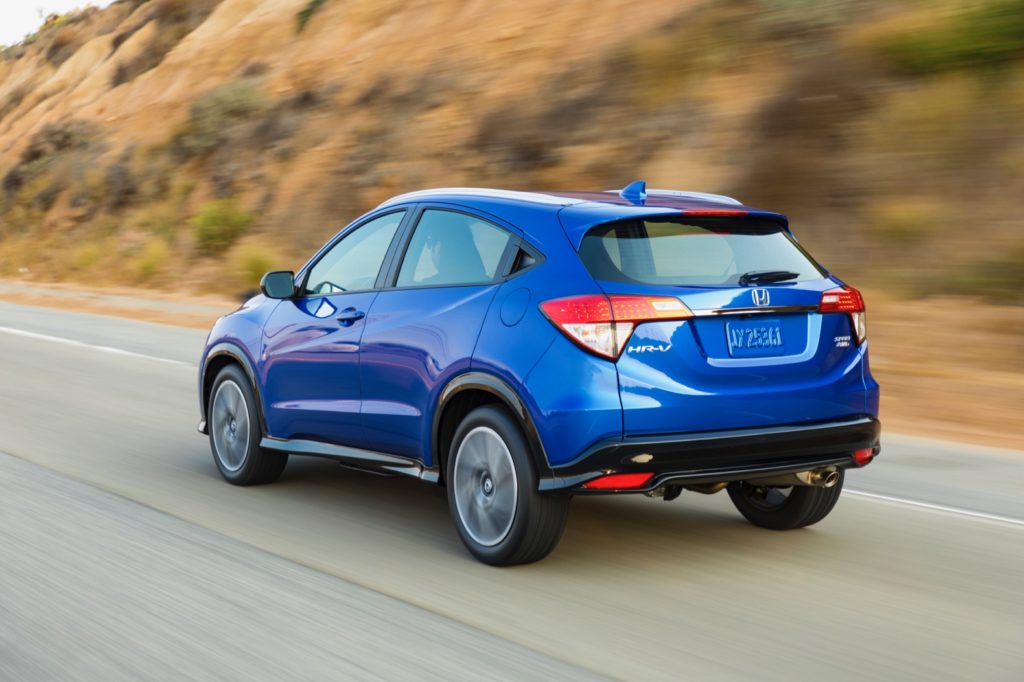
The reason we wish that the HR-V were offered with Honda’s 1.5L turbocharged four-cylinder is because the naturally-aspirated 1.8L doesn’t pack much punch. Acceleration around the city is adequate, but push it hard and the engine just gets louder without much else. There isn’t much “sport” under the hood, so if you’re looking for more power, you’ll want to check out the Hyundai Kona. On the road, the HR-V feels light on its feet, just like the Fit, but there is a bit too much body roll when the road gets twisty.
While we do wish the HR-V was a bit more athletic on the road, it’s a comfortable cruiser on the highway. The steering provides good feedback and the suspension does a good job of dulling the road’s imperfections.
Inside is where it really matters with the HR-V. Although it does have a small footprint, there’s plenty of room for your cargo and even rear seat passengers won’t complain about a lack of legroom. The HR-V’s second row Magic Seat is perfect. Lower the rear seat back and you’re greeted with a low, flat floor to load all your luggage. You can also raise the rear seat bottoms to provide a deep well between the front and rear seats for taller items, like a new houseplant.
In front, there’s plenty of legroom and headroom for the driver and front passenger, but we do wish there was more storage space for smaller items. The center console looks somewhat stylish, but it doesn’t provide much space for your stuff. Speaking of style, the touchscreen for the climate controls on upper trim levels does give the HR-V a more luxurious feel than you’d expect in this class, but we do wish it had dual climate control.
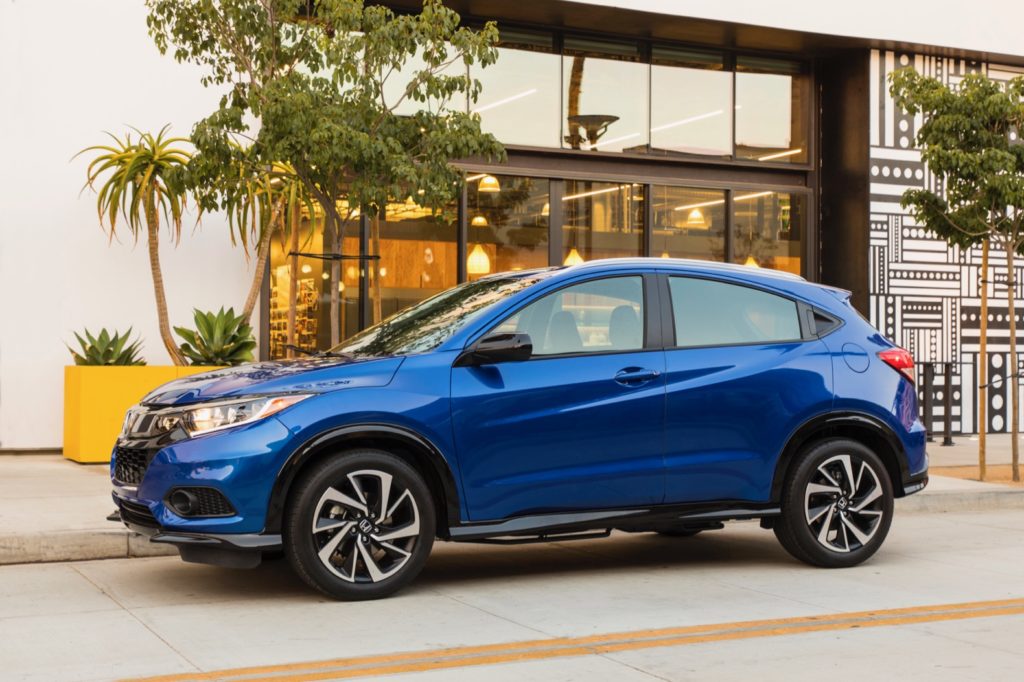
The 2019 HR-V is offered in five trim levels: LX, Sport, EX, EX-L and Touring. It starts at $21,715, including the destination fees.
After our week with the 2019 Honda HR-V we were impressed with the HR-V’s features, how much we could haul in it and how much it easily fit the needs of an urbanite. The HR-V takes everything that we already love about the Fit, wrapped in a crossover that buyers crave.

